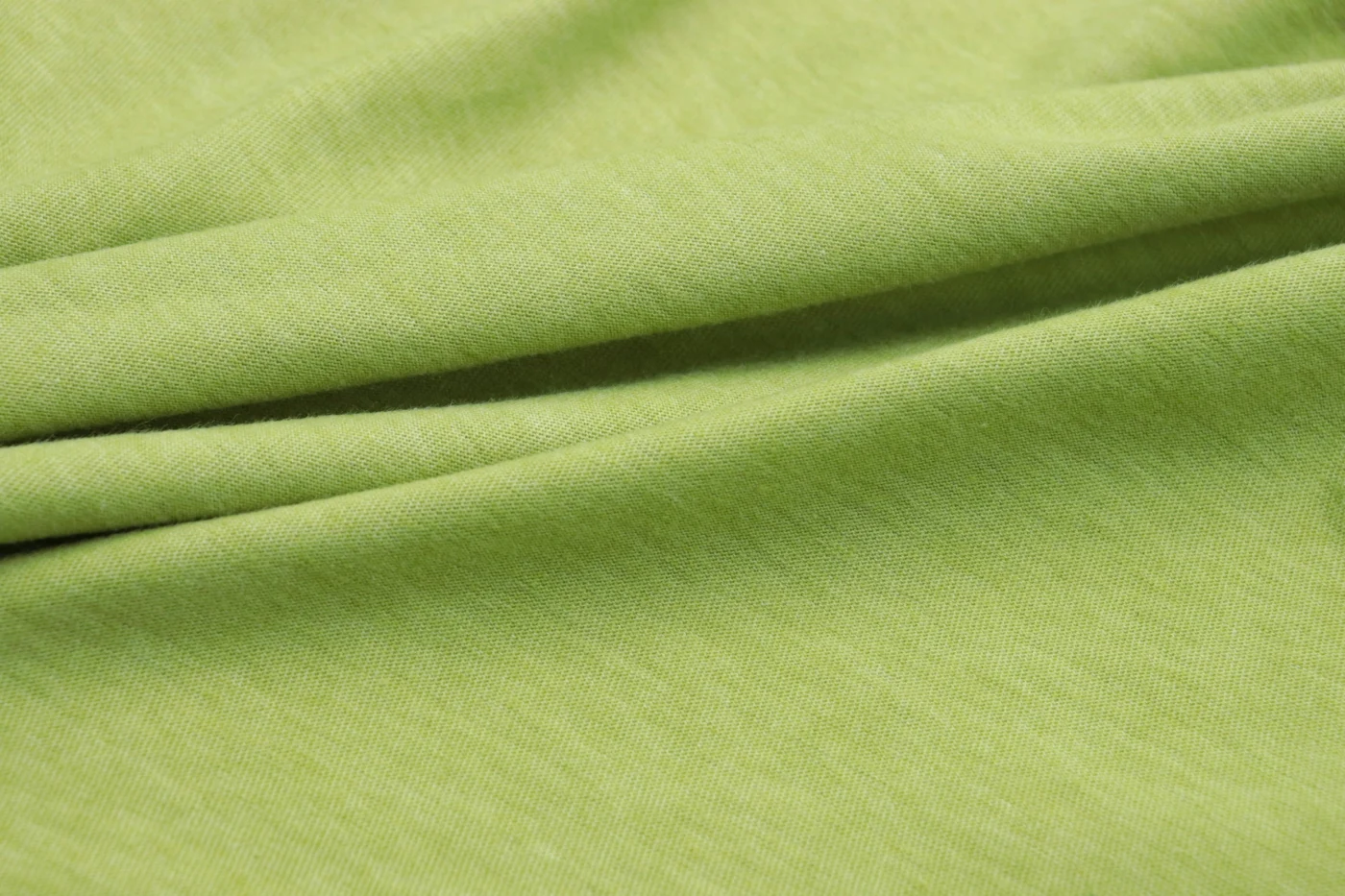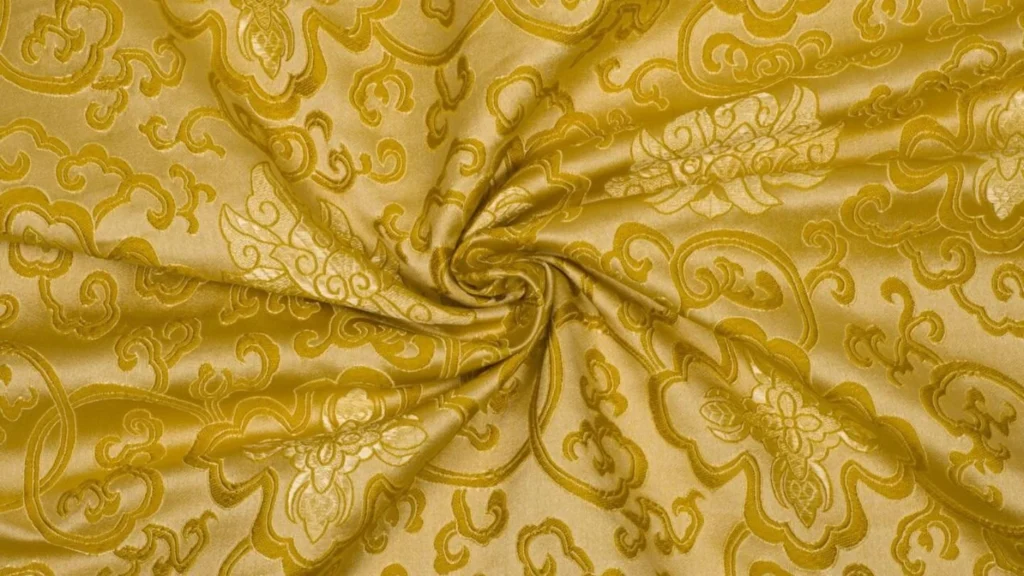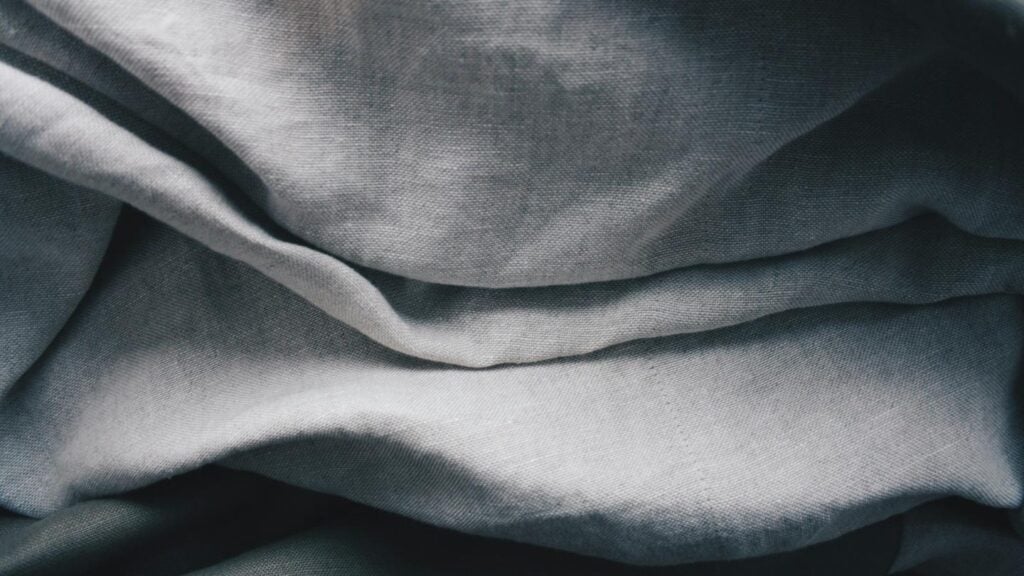2 – Benefits of Choosing Bamboo Fabric
3 – Bamboo Fabric vs Other Fabrics
4 – How Bamboo Fabric Is Manufactured
5 – Common Uses in Fashion
6 – Understanding the Environmental Impact of Bamboo Fabric
7 – Exploring Price Points and Value for Money
8 – Conclusion
9 – FAQs
What is Bamboo Fabric?
Bamboo fabric is a type of textile made from the fibers of the bamboo plant. Known for its softness, breathability, and sustainability, it has gained significant popularity as an eco-friendly alternative to synthetic fibers like polyester and nylon, as well as natural fibers like cotton. Bamboo, a fast-growing grass, is cultivated in various regions around the world, including Asia and South America, and is one of the most renewable resources available. It requires minimal water, pesticides, and fertilizers to grow, making it an environmentally responsible choice for fabric production.

What sets bamboo fabric apart is its natural antimicrobial properties and its ability to wick moisture away from the body, making it perfect for activewear and sleepwear. Depending on the manufacturing process, bamboo can be turned into several types of fabric, with bamboo viscose and bamboo linen being the most common. Bamboo fabric is not only soft and smooth to the touch, but it also provides excellent temperature regulation, keeping you cool in hot weather and warm in cooler conditions.
Key Features of Bamboo Fabric:
- Eco-Friendly: Bamboo fabric is made from a renewable resource and is biodegradable, making it an environmentally conscious choice.
- Softness and Comfort: The fabric is naturally soft, resembling silk or cotton, providing a comfortable feel against the skin.
- Antimicrobial and Hypoallergenic: Bamboo fibers have natural antibacterial properties that help keep garments fresh and odor-free. It is also gentle on sensitive skin.
- Breathability and Moisture-Wicking: Bamboo fabric is highly breathable, which helps in moisture absorption, making it ideal for sportswear, underwear, and sleepwear.
As consumers become increasingly aware of the environmental impact of their purchases, Bamboo fabric has emerged as a sustainable and luxurious option in the textile industry. In the following sections, we will dive deeper into the origin, composition, and unique properties of Bamboo fabric to better understand why it is becoming a favorite among both eco-conscious and fashion-conscious consumers.
Bamboo Fabric Composition
The composition of Bamboo fabric plays a crucial role in its unique properties such as softness, breathability, and antimicrobial characteristics. Unlike natural fibers like cotton, which are directly spun from plant fibers, Bamboo fabric can be made through different processes that transform bamboo stalks into a textile. The main forms of Bamboo fabric are bamboo viscose (also called bamboo rayon) and bamboo linen, each with distinct compositions and characteristics.
Key Components of Bamboo Fabric:
- Bamboo Viscose
The most common form of Bamboo fabric is bamboo viscose. To make bamboo viscose, the bamboo stalks are broken down into a pulp using a chemical process similar to the process used for creating rayon. This process involves soaking the bamboo in a solution of sodium hydroxide and carbon disulfide, which dissolves the bamboo fibers into a viscous liquid. This liquid is then forced through spinnerets to form long fibers that are solidified and turned into fabric.- Softness: Bamboo viscose has a soft, silky texture, making it suitable for luxury fashion and bedding.
- Breathability: The fibers retain the moisture-wicking and breathable qualities of bamboo, offering comfort for activewear and sleepwear.
- Bamboo Linen
Bamboo linen, on the other hand, is produced using a more mechanical process. Instead of being chemically treated like bamboo viscose, bamboo linen is made by crushing the bamboo stalks and extracting the fibers through a process of natural retting. The resulting fibers are spun into yarn and woven into fabric. This process is more labor-intensive but maintains the bamboo’s natural properties without the use of harsh chemicals.- Strength: Bamboo linen is stronger and more textured than bamboo viscose, providing a more rustic feel.
- Sustainability: The mechanical process used to produce bamboo linen is considered more eco-friendly because it uses fewer chemicals compared to the viscose method.
- Bamboo Fiber Content in Blends
In addition to bamboo viscose and bamboo linen, bamboo fibers can be blended with other materials such as cotton, polyester, or spandex to create fabrics with added stretch, durability, or performance characteristics. These blends are common in activewear and athletic gear due to the combination of comfort and functionality they offer.
How Composition Affects Performance:
- Softness and Comfort: The fibers in bamboo fabric are naturally smooth and round, which contributes to the fabric’s silky texture. This makes bamboo fabric particularly comfortable for close-fitting garments like underwear, activewear, and sleepwear.
- Breathability and Moisture-Wicking: The porosity of the bamboo fiber allows it to breathe and wick moisture effectively. This makes bamboo fabric ideal for garments that need to keep the skin dry, such as sportswear and loungewear.
- Antimicrobial Properties: Bamboo fabric naturally resists bacteria and odor, making it an excellent choice for underwear, sheets, and activewear. This inherent antibacterial quality is due to a natural substance called bamboo kun found in the bamboo plant.
- Sustainability: Bamboo fabric made from mechanically processed bamboo linen is the most eco-friendly option, as it avoids the use of harsh chemicals. Bamboo viscose, while still an eco-friendly option, requires chemical processing that can contribute to environmental concerns if not managed properly.
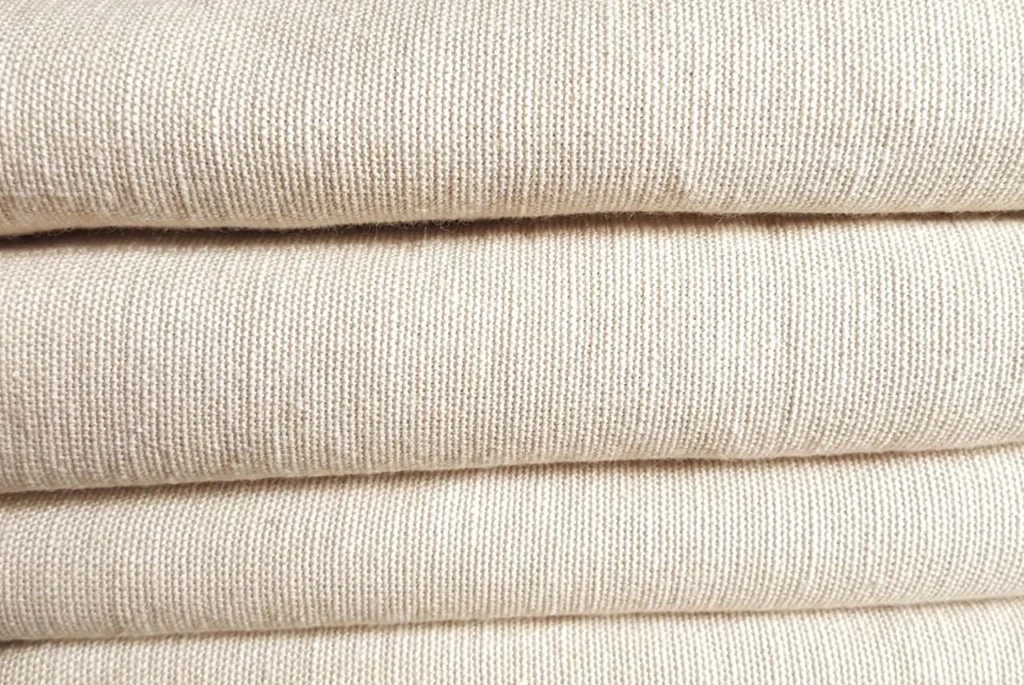
The composition of Bamboo fabric determines not only its texture and appearance but also its sustainability and functionality. Whether made through a chemical process like bamboo viscose or a mechanical process like bamboo linen, the fabric remains a versatile and eco-friendly choice for various applications.
Bamboo Fabric vs Other Fabrics
When comparing Bamboo fabric to other commonly used textiles such as cotton, polyester, linen, and silk, it stands out due to its eco-friendly production and unique natural properties. While Bamboo fabric shares some similarities with these fibers, it also offers distinct advantages in terms of comfort, durability, and sustainability. Let’s break down how Bamboo fabric compares to other popular fabrics to better understand why it is becoming a favored choice in fashion and home textiles.
Bamboo Fabric vs Cotton
- Cotton: Cotton is one of the most popular natural fibers, known for its softness and breathability. However, the production of cotton is water-intensive, requiring large amounts of water and pesticides, which can have a significant environmental impact.
- Bamboo fabric, on the other hand, is more sustainable, requiring much less water to grow and needing no pesticides. Additionally, Bamboo fabric is naturally antibacterial, which is not a property of cotton.
- Key Difference: Bamboo fabric is more eco-friendly, antimicrobial, and requires less water than cotton.
Bamboo Fabric vs Polyester
- Polyester: Polyester is a synthetic fiber made from petroleum-based resources. It is durable, moisture-resistant, and easy to maintain, but its production is energy-intensive and contributes to pollution. Additionally, polyester is non-biodegradable, leading to environmental waste.
- Bamboo fabric, as a natural fiber, is biodegradable and is a more sustainable option. While polyester excels in durability and resistance to wrinkling, Bamboo fabric offers greater breathability, comfort, and natural antimicrobial properties.
- Key Difference: Bamboo fabric is a biodegradable and eco-friendly alternative to polyester, providing better comfort and breathability for activewear and loungewear.
Bamboo Fabric vs Linen
- Linen: Linen is another natural fabric made from the flax plant, known for its cooling and breathable qualities. It is often used in summer clothing and home textiles like bedding and tablecloths. However, linen can be prone to wrinkling and is less elastic than Bamboo fabric.
- Bamboo fabric offers similar breathability to linen, but with the added benefits of stretch, softness, and moisture-wicking properties. Additionally, Bamboo fabric is naturally antibacterial, unlike linen, making it a better choice for activewear and underwear.
- Key Difference: Bamboo fabric is softer, more stretchable, and offers antimicrobial properties, while linen is more crisp and stiff but equally breathable.
Bamboo Fabric vs Silk
- Silk: Silk is a luxurious natural fiber known for its shine and smooth texture. It is breathable and has natural temperature-regulating properties, but it is delicate and requires special care. Silk is also a more expensive fabric.
- Bamboo fabric, while not as luxurious in appearance, offers a similar softness and breathability at a more affordable price point. Bamboo fabric is also more durable and easier to care for compared to silk, which can be prone to damage from abrasion and moisture.
- Key Difference: Bamboo fabric is more durable, affordable, and eco-friendly than silk, while still offering a soft texture and breathability.
Bamboo Fabric vs Wool
- Wool: Wool is a natural fabric known for its insulation and warmth, making it perfect for winter wear. However, wool can be itchy, difficult to care for, and less breathable than Bamboo fabric.
- Bamboo fabric is softer, more breathable, and naturally antimicrobial, making it a better choice for warmer climates and activewear.
- Key Difference: Bamboo fabric is more breathable, softer, and sustainable, while wool excels in insulation and warmth.
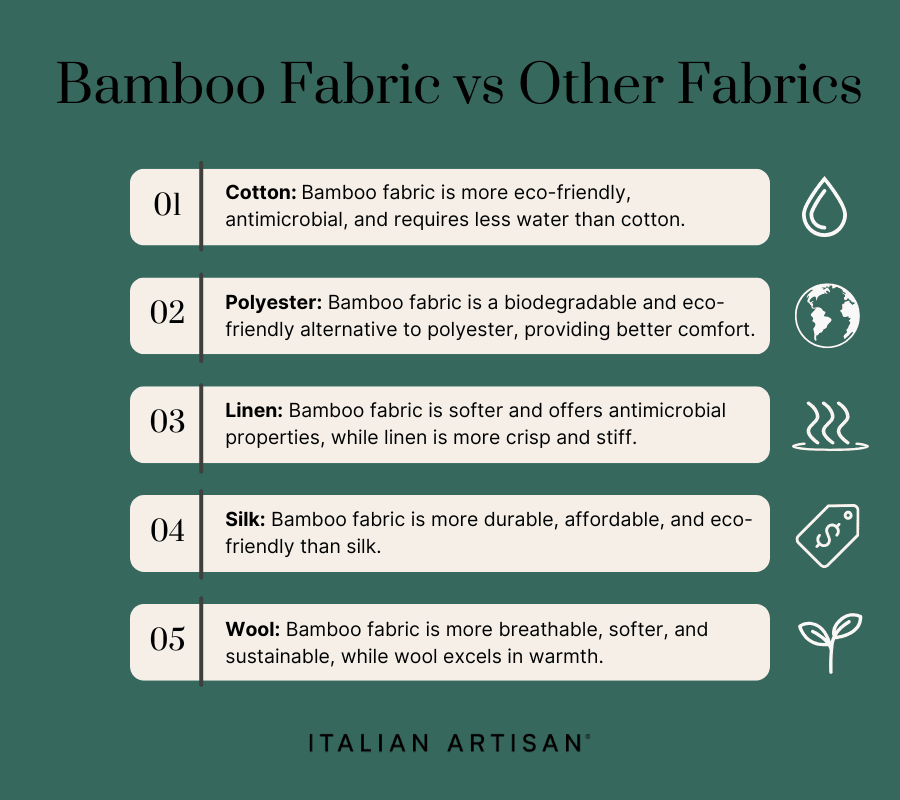
How Bamboo Fabric Is Manufactured
Bamboo fabric is made using either a chemical or mechanical process, each affecting the fabric’s texture and eco-friendliness.
Key Manufacturing Processes:
- Bamboo Viscose (Rayon)
- Bamboo stalks are crushed and treated with chemicals to dissolve the fibers, creating a viscous solution.
- The solution is then spun into fibers, which are washed, dried, and spun into yarn.
- Soft and breathable, bamboo viscose is the most common type of bamboo fabric, though the chemical process raises environmental concerns.
- Bamboo Linen
- A mechanical process that uses natural retting to extract fibers from bamboo stalks.
- Bamboo linen is stronger, eco-friendly, and retains more of bamboo’s natural properties, though it is rougher than bamboo viscose.
- Bamboo Blends
- Bamboo fabric is often blended with fibers like cotton or polyester to improve performance and durability.
- Finishing Treatments
- Dyeing, anti-microbial coatings, and water-resistant treatments are applied to enhance appearance and functionality.
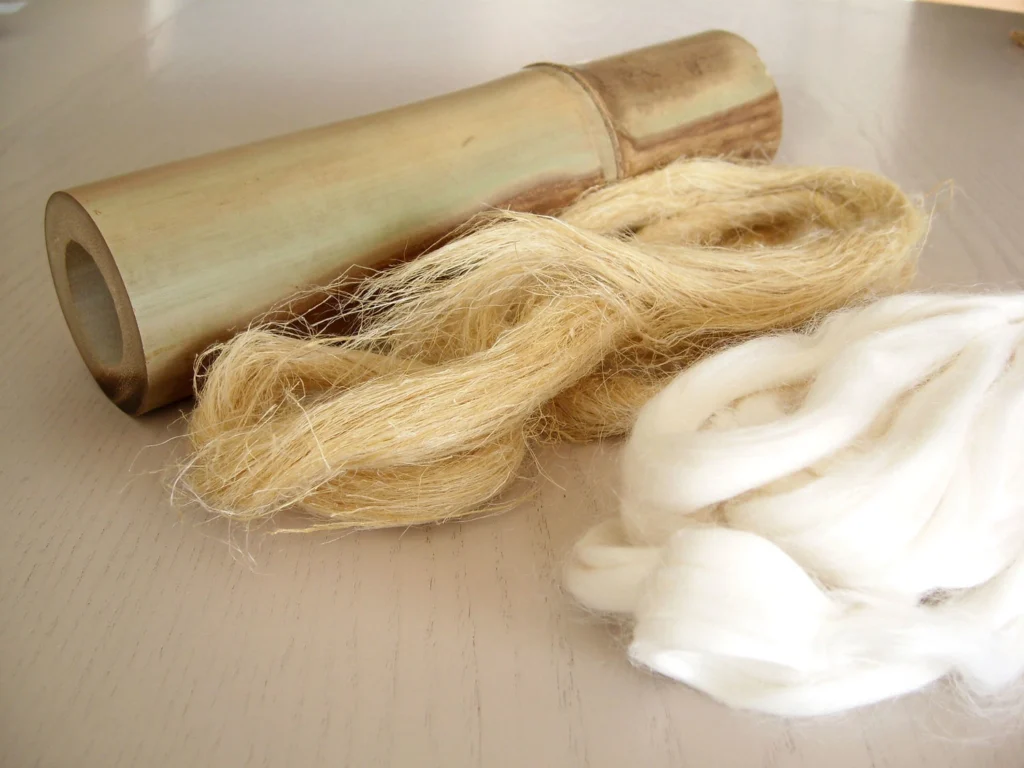
Environmental Impact:
- Bamboo viscose requires a chemical process with a higher environmental impact, but newer closed-loop systems are improving sustainability.
- Bamboo linen, processed mechanically, is a more eco-friendly option.
Produce your fashion collection with us
Common Uses in Fashion
Bamboo fabric has gained popularity in both fashion and home textiles due to its softness, breathability, and sustainability. With its luxurious feel and eco-friendly nature, it is an excellent choice for a variety of garments and products. Here are some of the most common applications of Bamboo fabric:
Key Uses of Bamboo Fabric:
- Activewear and Sportswear
Bamboo fabric is commonly used in sportswear and activewear due to its moisture-wicking properties and breathability. It keeps the body dry during intense activities by pulling moisture away from the skin, making it ideal for leggings, workout shirts, and sports bras. The fabric’s natural antibacterial properties also help reduce odors, which is perfect for activewear. - Swimwear
Thanks to its elasticity and breathability, Bamboo fabric is frequently used in swimwear. It provides a comfortable fit while being soft against the skin. Additionally, bamboo’s moisture-wicking properties make it great for swimwear that dries quickly. - Lingerie and Shapewear
Bamboo fabric is soft, gentle on the skin, and naturally hypoallergenic, making it ideal for lingerie and shapewear. Bamboo is a natural choice for underwear because it’s breathable, reducing the risk of irritation or discomfort often associated with synthetic fabrics. - Sleepwear
Bamboo fabric is also commonly used in sleepwear like pajamas, robes, and sleeping masks. Its natural softness, breathability, and temperature-regulating properties help ensure a comfortable night’s sleep. Bamboo fabric is naturally cooling, keeping the body at an optimal temperature while sleeping. - Home Textiles
Beyond fashion, Bamboo fabric is used in home textiles, such as bed sheets, towels, blankets, and pillows. Its softness and antibacterial qualities make it a popular choice for bedding, where comfort and hygiene are key. Bamboo’s sustainability also makes it a preferred option for eco-conscious consumers looking to furnish their homes with more natural materials. - Luxury Fashion
In recent years, Bamboo fabric has found its way into luxury fashion, with high-end designers incorporating it into dresses, blouses, and scarves. The fabric’s soft feel and natural sheen add a touch of elegance to fashion items, while still offering sustainability.
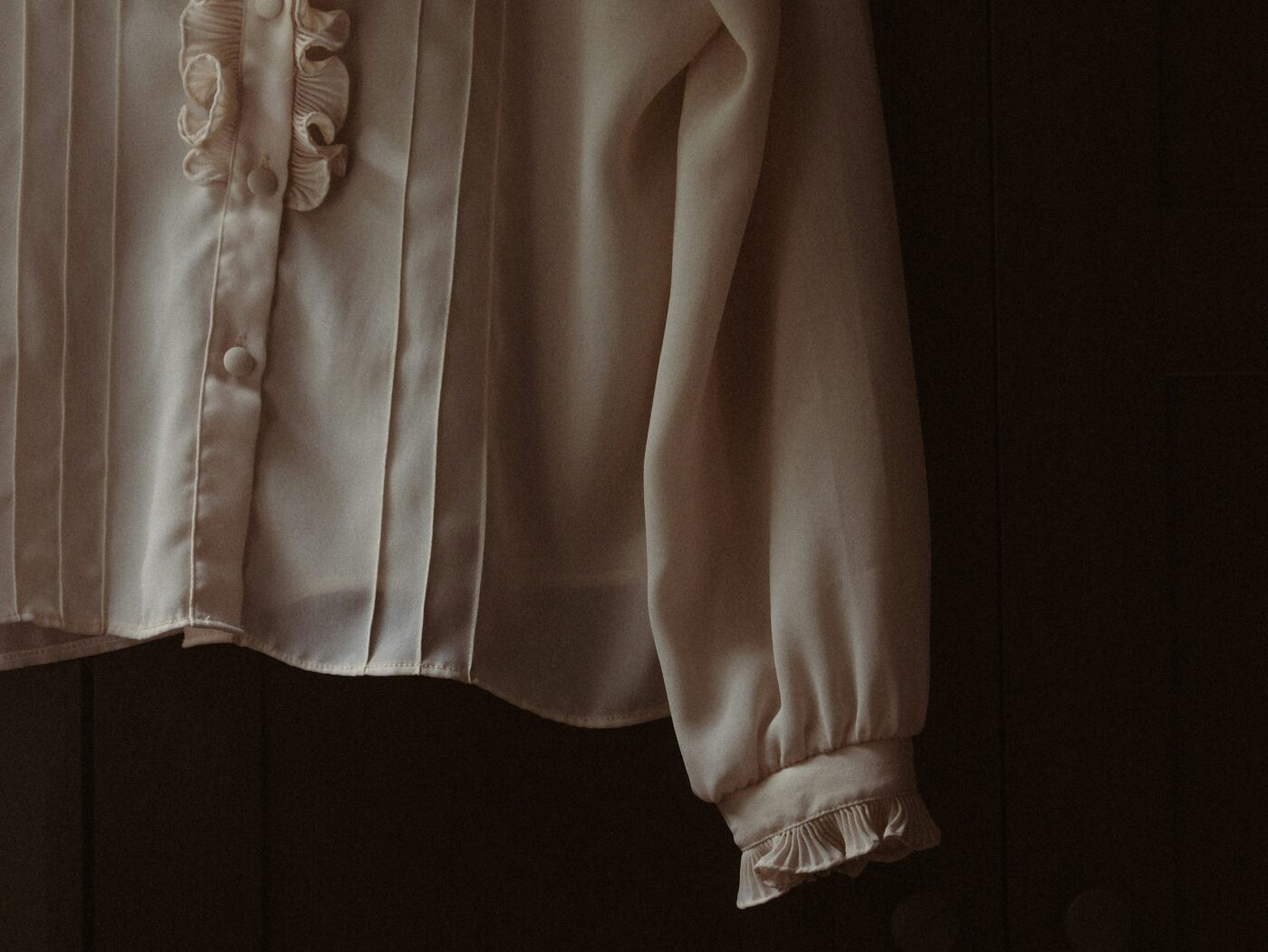
Why Choose Bamboo Fabric in Fashion?
- Sustainability: Bamboo fabric is eco-friendly, being biodegradable and requiring fewer resources to grow compared to conventional fibers like cotton.
- Comfort: The fabric’s natural softness and breathability make it ideal for close-fitting garments such as underwear, sleepwear, and activewear.
- Antibacterial: Bamboo fabric naturally resists bacteria and odors, making it a great choice for items like sportswear and lingerie.
- Versatility: From luxury fashion to everyday clothing, Bamboo fabric offers comfort, style, and eco-consciousness for a wide range of garments.
Bamboo fabric has quickly become a popular choice in the fashion industry due to its sustainability and performance characteristics, making it a smart choice for activewear, luxury fashion, and home textiles.
Understanding the Environmental Impact of Bamboo Fabric
Bamboo fabric is often seen as an eco-friendly alternative due to its renewability and biodegradability. Bamboo grows rapidly without the need for pesticides or fertilizers, making it a sustainable crop. However, the environmental impact of bamboo fabric depends largely on the production process.
Key Environmental Considerations:
- Bamboo as a Renewable Resource
Bamboo is fast-growing and requires minimal resources, making it an eco-friendly crop. Its carbon sequestration properties help reduce deforestation. - Bamboo Viscose
The chemical process to produce bamboo viscose involves harsh chemicals like sodium hydroxide, which can be harmful to the environment if not properly managed. Closed-loop systems are helping reduce this impact by recycling chemicals. - Water Usage and Pollution
Traditional dyeing processes can contribute to water pollution, but newer waterless dyeing techniques are helping to reduce water waste and harmful chemical runoff. - Bamboo Linen
Bamboo linen is made using a mechanical process, which is more eco-friendly than the viscose process. It requires fewer chemicals but is generally rougher than bamboo viscose.
Sustainability Efforts:
- Recycled Bamboo: Using recycled bamboo fabric reduces waste and environmental impact.
- Eco-Friendly Certifications: OEKO-TEX and GOTS certifications ensure sustainable and ethical production methods.
Bamboo fabric offers sustainability but needs mindful manufacturing practices to minimize its environmental impact.
Exploring Price Points and Value for Money
Bamboo fabric is often viewed as a premium option in the textile industry, offering both luxury and sustainability. However, its price can vary depending on factors such as the type of bamboo fabric, the production method, and the brand. While it can be more expensive than other materials like cotton or polyester, the long-term benefits of Bamboo fabric make it a valuable investment in both fashion and home textiles.
Key Factors Affecting Price:
- Production Method
The cost of Bamboo fabric can differ based on how it is produced. Bamboo viscose requires a chemical process, which can be more expensive than the mechanical process used to create bamboo linen. However, bamboo viscose is often softer and more suitable for luxury garments. - Fabric Type
Bamboo fabric comes in various forms such as bamboo viscose, bamboo linen, and blended fabrics. Bamboo viscose is generally the most affordable, while bamboo linen may cost more due to its eco-friendly production method. - Brand and Application
Luxury brands that use Bamboo fabric in their collections may mark up the price due to brand reputation and added design features. The cost can also vary based on whether the fabric is used in sportswear, sleepwear, or home textiles.
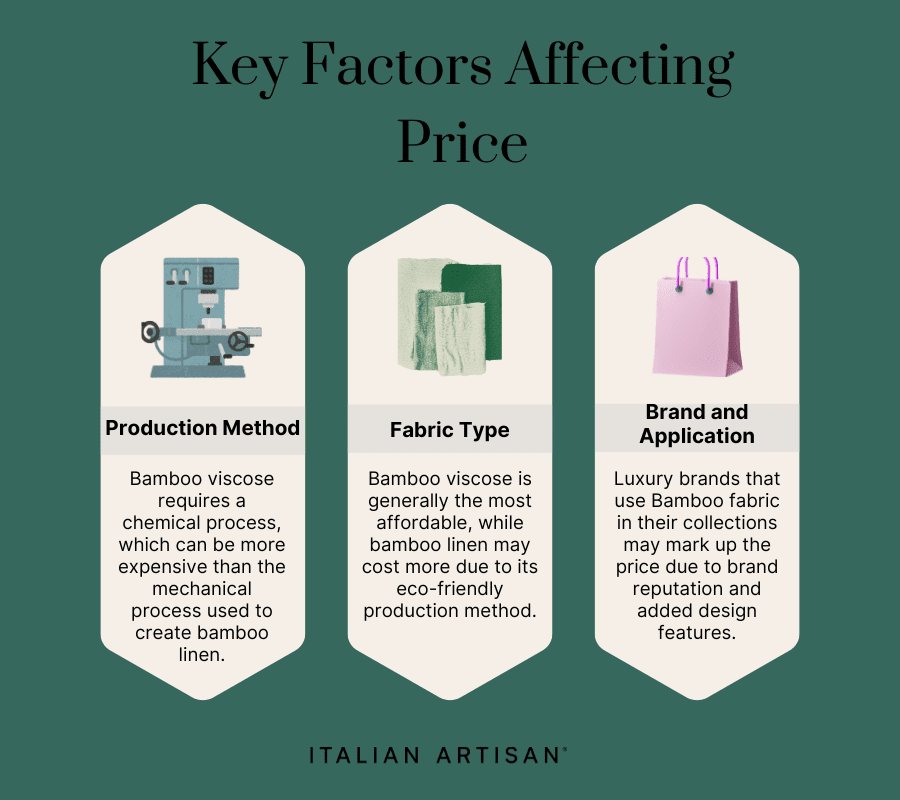
Value for Money:
- Durability: Bamboo fabric is strong and durable, making it a long-lasting option, particularly in activewear and home textiles. Its resilience helps justify the higher initial investment.
- Comfort and Performance: The softness, breathability, and moisture-wicking properties of Bamboo fabric make it comfortable for daily wear, especially in underwear, activewear, and sleepwear. These performance features provide good value for the price.
- Sustainability: As an eco-friendly fabric made from a renewable resource, Bamboo fabric offers long-term value by reducing environmental impact compared to synthetic fabrics like polyester, which are non-biodegradable.
Conclusion
Bamboo fabric is a sustainable, soft, and versatile material, ideal for activewear, luxury fashion, and home textiles. Known for its eco-friendly production and breathability, it offers comfort and performance that many traditional fabrics can’t match. While it may be more expensive than cotton or polyester, its durability, antimicrobial properties, and environmental benefits make it a worthy investment.
With continued sustainable manufacturing innovations, Bamboo fabric is becoming an even more eco-friendly choice for fashion and home textiles, offering both luxury and sustainability.
FAQs
1. What is Bamboo fabric?
Bamboo fabric is a textile made from the fibers of the bamboo plant. It is known for its softness, breathability, and eco-friendly nature, making it a popular choice for activewear, home textiles, and luxury fashion.
2. How is Bamboo fabric made?
Bamboo fabric is made through either a chemical process (for bamboo viscose) or a mechanical process (for bamboo linen). Bamboo viscose is created by dissolving bamboo in chemicals, while bamboo linen is made by naturally extracting fibers.
3. Is Bamboo fabric eco-friendly?
Yes, Bamboo fabric is an eco-friendly option. Bamboo is a renewable resource that requires little water or pesticides to grow. However, the production of bamboo viscose can involve chemicals, though sustainable closed-loop systems are improving its environmental impact.
4. How does Bamboo fabric compare to Cotton?
Bamboo fabric is more sustainable than cotton, as bamboo requires less water and no pesticides. Bamboo fabric is also antibacterial, making it ideal for activewear, while cotton is softer and more breathable but less durable.
5. Is Bamboo fabric soft?
Yes, Bamboo fabric is known for its silky-soft texture, making it comfortable for close-fitting garments like underwear, sleepwear, and activewear.
6. Does Bamboo fabric shrink?
Bamboo fabric generally does not shrink, but it is recommended to follow care instructions such as washing in cold water and air drying to maintain its shape and longevity.
7. Is Bamboo fabric durable?
Yes, Bamboo fabric is durable and resistant to abrasion and pilling. The bamboo linen variety is especially strong due to its mechanical production.
8. Is Bamboo fabric expensive?
Bamboo fabric can be more expensive than cotton or polyester, but its eco-friendliness, softness, and performance benefits make it a worthwhile investment.
9. Can Bamboo fabric be recycled?
Bamboo fabric is biodegradable, and while recycling options are limited, there are efforts to recycle bamboo fibers into new fabric, contributing to a more sustainable circular economy.
10. How do I care for Bamboo fabric?
To care for Bamboo fabric, it is best to wash in cold water and air dry to avoid damage. Avoid using fabric softeners as they can affect the fabric’s natural moisture-wicking properties.

